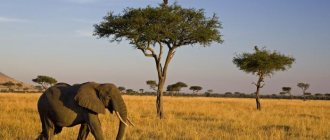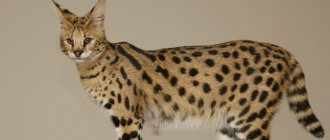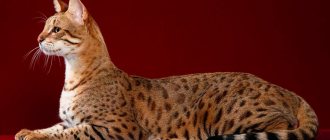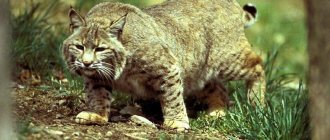Savannah is an amazing world where nature has set its own rules. Thus, the change of seasons occurs quite abruptly: with the onset of drought, winter begins, then it is replaced by summer, which is accompanied by heavy rains. Each period has its own impact on the state of flora and fauna. Sometimes the area looks dull and lifeless, and at other times the landscapes are striking in their beauty. It is this contrast that attracts many tourists.
general characteristics
Savannas are climatic regions characteristic of higher tropical countries with a dry continental climate. Unlike true steppes, savannas, in addition to grasses, also contain shrubs and trees, sometimes growing as a whole forest, as, for example, in Brazil. Savannas have a lot in common with the steppe, which is located in temperate latitudes, both in terms of moisture regime and living conditions. As in the steppe zone, the inhabitants have to adapt to high air temperatures in one season and low rainfall in the dry season.
The herbaceous vegetation of savannas consists mainly of tall, tough-leathered grasses; mixed with the cereals are other perennial herbs and shrubs, and in damp places flooded in the spring, also various representatives of the sedge family. Shrubs grow in savannas, sometimes in large thickets, occupying an area of many square meters. Savannah trees are usually short-growing; the tallest of them are no taller than our fruit trees, which they are very similar to with their crooked stems and branches. Trees and shrubs are sometimes entwined with vines and overgrown with epiphytes. There are few bulbous, tuberous and fleshy plants in savannas. Lichens, mosses and algae are found in savannas only on rocks and trees.
Brazilian savannas are light, sparse forests where you can walk and drive freely in any direction; the soil in such forests is covered with herbaceous and semi-shrub vegetation up to 1 meter in height. In savannas of other countries, trees do not grow at all or are extremely rare and are very stunted. The grass cover is also sometimes very low, even pressed to the ground. At the end of dry seasons, fires often occur in savannas. Some plants are able to survive in such conditions, for example, the baobab is distinguished by a thick, fire-protected trunk that, like a sponge, can store water reserves. Its long roots absorb moisture deep underground. Acacia has a wide, flat crown that creates shade for the leaves growing below, thereby protecting them from drying out.
Many areas of the savannah are now used for cattle ranching, and wild life there has completely disappeared. However, in the African savannah there are huge national parks where wild animals still live.
Giraffe
These are amazing animals of Africa. It is impossible to imagine Savannah without these majestic beauties. Even children know their graceful gait and surprisingly long neck. Not everyone knows that the “name” of the giraffe translated from Latin means “camel-leopard”. Perhaps those who first met this handsome man decided that he was a cross between these animals. In addition to a long neck, the giraffe also has a very long tongue (up to 45 cm).
These giants are herbivores. They feed on tree leaves. Thanks to their high growth, they can reach young and succulent foliage. It is not very convenient for a giraffe to drink: you have to bend your legs. The long neck of this giant, like all mammals, has 7 vertebrae.
Geographical position
Savannah is characterized by a tropical and subequatorial climate . In terms of precipitation regime and natural conditions, savannas are similar to temperate steppes. They are characterized by seasonal precipitation: during the rainy season the temperature is high, during the dry season there is practically no precipitation.
The soil contains few nutrients; during the dry season it dries out, which quite often leads to fires, and during the rainy season it becomes swampy. The average annual temperature ranges from 20 to 30°C, the annual precipitation ranges from 254 to 762 mm. In South America, savannas are divided into 3 types: closed , chaco and lowland . The closed ones cover an area of 2 million km2 on the Brazilian Plateau and are characterized by different types of ecosystems: fields with no trees, fields with few trees and shrubs, woody savannas and savannas in which forest cover covers more than 50% of the area. The Chacos cover the territory of Bolivia, Paraguay and Argentina and cover an area of 1 million km2. Lowland savannas cover an area of 500 thousand km2 in Venezuela and Colombia.
- Saber-toothed tiger
- 50 facts about kangaroos
- long eared hedgehog
- Cross spider
- Reptiles
- 72 facts about plants
The savannah zone from northern Kenya to the sea coast of Angola is the largest plant community on our planet by area, occupying at least 800 thousand km2. If we add another 250 thousand km2 of the Guinea-Sudanese savanna, it turns out that more than a million square kilometers of the Earth’s surface are occupied by a special natural complex - the African savanna.
Temperature and climate of savannas
Tropical savanna biomes have two clearly defined seasons. As a rule, they are called the “winter” season and the “summer” season. These seasons are not accompanied by extreme rises and falls in temperature and are associated with seasonal differences. In fact, all tropical savannas are located in warm or hot climate zones, mainly in latitudes from 5 to 10 and from 15 to 20. The annual temperature ranges from 18 degrees to 32 degrees. The increase in temperature usually occurs very gradually.
Winter – dry season
Winter is the dry season in the tropical savanna biome. This season usually lasts from November to April. During this season, savannas typically receive an average of only four inches of rainfall. During most of this time, usually from December to February, there may be absolutely no rain in the savannahs. This is usually the coolest time of the year. The average temperature is about 21 degrees. The dry season is usually heralded by severe thunderstorms in October and subsequent strong winds that dry out the air and bring dry air masses. During January, at the height of the dry season, fires often occur in the savannahs.
During the dry season, many animals have to make long journeys in search of water and food. The dry season is the period of great migrations.
Summer is the rainy season
Blue Wildebeest (Connochaetes taurinus) in the shade of the huge Acacia Thorn Trees. Lowveld, Mpumalanga, South Africa (February 2009). Martin Heigan [email protected] https://anti-matter-3d.com https://www.flickr.com/photos/martin_heigan
The hot humidity of the rainy seasons in the savannas influenced the fact that this natural area began to be classified as tropical. Heavy rains
start in May or June. From May to October, the savannas receive the most rainfall (10 to 30 inches). Moist air, rising from the ground, encounters a cold atmosphere and rain occurs. In summer, in the afternoon, heavy and numerous precipitation falls in the savannas. Plants and animals of the savanna have adapted to living in semi-aquatic conditions during this time, and the porous soil of the savanna helps rain drain quickly. The rainy season is undoubtedly the best time of year in the savannah.
Seasonal effects
During the summer rainy seasons, the savannah has dense and lush grasslands. Many of the biome's inhabitants breed at this time, since mother's milk depends on a variety of herbs. During the dry season, many animals migrate, while others continue to feed on the grasses of the savannah, and in turn are eaten by carnivores. Savanna plants, with deep roots, fire-resistant bark and systems for carrying water during long dry periods, are specially adapted to survive the dry season.
№9
Fires, unfortunately, are an integral part of savannas. However, despite the enormous destruction, they also bring benefits. During fires, dead grass burns and new growth appears. Most plants survive fires because they have a well-developed root system. Trees have thick bark, which allows them to protect themselves from critical damage during fires. Some animals burrow deep into the ground to survive fires, while others quickly leave the danger zone.
Soils
In savannas, soils are developed, collectively called red-brown; when distinguishing them into a special type, they use geographical characteristics, i.e. they include open areas with grassy cover. They are characterized by a greater or lesser content of humus from the decomposition of herbaceous vegetation, as a result of which such soils are rich in nutrients. In periodically moistened soils, in savannas, the processes of enrichment with sesquioxides occur more vigorously than in the red soils of tropical rainforests, and often lead to the formation of a shell, that is, a hard crust on the surface, or the fertile granular structure of the soil mentioned above.
In savannas, the sharp seasonality of precipitation is reflected in the processes of soil formation: during the rainy period, rapid and vigorous leaching of soil occurs, while in the dry period, due to the strong heating of the surface layers, the reverse process occurs - the rise of soil solutions. Therefore, humus accumulates to a greater extent in dry savannas and steppes with a long rainless period. Savannah soils, depending on the amount of precipitation and the duration of the dry period, are very diverse, forming transitions from lateritic and red-brown soils of cereal savannas to black and chernozem soils of dry savannas. Depending on the combination of climatic and soil conditions, as well as the topography, savannas are distinguished by a wide variety of plant communities and overall character aspects.
Main soil types
The soils of the formation are distributed within the Sahel zone, the Ethiopian Highlands and the East African Plateau, as well as in the arid regions of the Kalahari and Karoo. The soils of the formation occupy 6,262.2 thousand square meters. km. They are grouped by region based on the length of the dry season: about four months, more than four months and with a long dry season. Hydromorphic and semi-hydromorphic soils 752.2 thousand square meters. km.
The soils are red-brown, distributed in North Africa between longitudes 15° and 30° south of the zone of brown subarid tropical soils and north of ferruginous tropical soils, as well as in South Africa on the submontane plains west of the Drakensberg Mountains. Soils develop on ancient continental leveling surfaces in two-season climate zones with annual precipitation of 400–500 mm. In terms of humidity, the climate is arid, with an average annual temperature of + 19°, +22°, an average January temperature of +24°, +27°, and of July + 14°, +17°.
Red-brown soils, according to R. Mainen (1962), are characterized by a total profile thickness of not exceeding two meters. In the soil above there is a yellowish-grayish or brownish crust 1–2 cm thick, usually with a leafy structure. Under the crust, to a depth of 20 cm, there is a loose horizon with a reddish tint, clayey with a clearly defined nutty structure. At a depth of 50–100 cm, horizon B is red in color, denser, hardening, which indicates lateritism; the structure is coarsely flat and blocky. From about 100 cm, an ocher-colored horizon begins, lighter towards the bottom. At a depth of 200 cm, small carbonate nodules appear. The surrounding soil mass is not always carbonate.
The bases of red-brown soils are often washed away. Significant content of free iron. In terms of mechanical composition, the soils are dominated by fine sand and are characterized by an increase in clay content in the B horizon. The humus content is from 0.5 to 1%, and it decreases quite sharply downwards, which is also typical for ferruginous tropical soils. Mineralization of humus is quite fast. Red-brown eutrophic (saturated) soils are formed on outcrops of basic, mainly volcanic, rocks of Central Africa in the zone of ferruginous tropical soils.
Areas with red-brown soils are used as pastures; In addition, millet and peanuts are grown on them.
Recommendations
- Anderson, Roger A., Fralish, James S., and Baskin, eds. Jerry M. 1999. Savanna, steppe, and outcrop communities of North America. Cambridge University Press.
- McPherson, G. R. (1997). Ecology and management of North American savannas. Tucson, AZ: University of Arizona Press.
- ^ a b
Werner, Patricia A.;
B. H. Walker; P. A. Stott (1991). "Introduction". In Patricia A. Werner (ed.). Savanna ecology and management: Australian perspectives and intercontinental comparisons
. Oxford: Blackwell Publishing. ISBN 978-0-632-03199-3. - Alexandro Solórzano, Jeanine Maria Felfili 2008 “Comparative analysis of the Cerrado International Terminal” IX Symposio Nacional Cerrado 13 and 17 de outubro de 2008 Parlamundi Barsilia, DF
- ^ a b
Manoel Claudio da Silva Janior, Christopher William Fagg, Maria Cristina Felfili, Paulo Hernane Nogueira, Alba Valeria Resende and Janine Maria Felfili 2006 "Chapter 4. Phytogeography of the Cerrado Senso Stricto and the zonation of land systems in central Brazil" in "Neotropical Savannas" Dry forests: plant diversity, biogeography and conservation" R. Toby Pennington, James A. Rutter (editors) 2006 CRC Press - ^ a b
Abdullahi Jibrin 2013 "Study on changes in physiognomic characteristics of vegetation of the Guinean savanna" Environment and Natural Resources Research 3:2 - ^ a b
Erica L. Geiger, Sybil G. Gotch, Gabrielle Damasco, M. Haridasan, Augusto C. Franco, and William A. Hoffmann, 2011 "Different roles of savanna and forest tree species in fire suppression restoration in the Brazilian savanna" Journal of Vegetation Science 22 - ^ a b
Scholz, Fabian G.; Bucci, Sandra J.; Goldstein, Guillermo; Meinzer, Frederick C.; Franco, Augusto C.; Salazar, Ana. 2008 "Changes in biophysical and physiological characteristics at the plant and stand level along tree density gradients in the Cerrado", Brazilian Journal of Plant Physiology. - Tait, L 2010, Structure and dynamics of grassland forests in north-eastern Australia, MSc thesis, Central Queensland University, Faculty of Science, Technology and Health, Rockhampton.
- Sankaran, Mahesh; Hanan, Niall P.; Scholes, Robert J.; Ratnam, Jayashree; Augustine, David J.; Cade, Brian S.; Ginou, Jacques; Higgins, Stephen I.; Le Roux, Xavier (December 2005). "Determinants of tree cover in African savannas". Nature
.
438
(7069):846–849. Bibcode:2005Natura.438..846С. Doi:10.1038/nature04070. ISSN 0028-0836. PMID 16341012. S2CID 4344778. - Oxford English Dictionary
, 3rd ed.
"Savannah", p.
Oxford University Press (Oxford), 2012. - ^ a b
D'Anghiera, Peter Martyr.
De Orbe Novo Decade.
Cum Ejusdem Legatione Babylonica. [
Decades of the New World.
With the Babylonian mission. ] Arnao Guillen de Brocard (Alcala), 1516 (in Latin).
Per. Richard Eden since Decades of the new world or western India, associated with the sciences and conquests of the Spaniards with a special description of the largest and largest lands and islands, have recently gone into the western ocean, becoming the inheritance of the kings of Spain.
, Book III, §3. William Powell (London), 1555. - Richard Eden: “The palace of this Comogrus
is at the foot of a well cultivated hill.
Hauynge toarde the outhe is a game consisting of twelve games in a wide and very bright design. This is playne, they are the caul of Zahuan
."[12] - Eden (1555), Book III, §6.
- The account of Peter the Martyr itself differs in places, variously placing Comagre 25 leagues west of and reachable by ship from Darien[14] or 70 leagues (approximately 290 kilometers or 180 miles) west of Darien and by a river flowing into the Southern Ocean .[12]
- Bancroft, Hubert H. (1882). "History of Central America. 1501–1530 " . San Francisco: A. L. Bancroft & Co., pp. LXXIV.
- Bancroft (1882), para. 362.
- Bancroft (1882), para. 347.
- NASA. "[earthobservatory.nasa.gov/Experiments/ICE/panama/Images/igbp_panama2000289_lg.gif Land Cover Classification]" from the Earth Observatory.
Composite Image Browser. Exercise 4: Plant signs . Accessed August 1, 2014 - ASALE, RAE-; RAE. "macana - Diccionario de la lengua española." “Diccionario de la lengua española” - Edición del Tricentenario
(in Spanish). Retrieved 2019-11-18. - David R. Harris, ed. (1980). Human ecology in a savannah environment
. London: Academic Press. pp., 5–9, 12, 271–278, 297–298. ISBN 978-0-12-326550-0. - Roger S. Anderson; James S. Fralish; Jerry M. Baskin, ed. (1999). Savanna, steppe, and outcrop communities in North America
. Cambridge University Press. pp. 2–3. ISBN 978-0-521-57322-1. - David L. Lentz, ed. (2000). An Imperfect Balance: Landscape Transformations in Pre-Columbian America
. New York: Columbia University Press. pp.–74. ISBN 978-0-231-11157-7. - Moncrieff, G. R., Scheiter, S., Langan, L., Trabucco, A., Higgins, S. I. (2016). Future distribution of the savanna biome: Model and biogeographic contingencies, Philos.
TR Soc. B , 371, 2015.0311, 2016. link to website. - Staver, A.K., Archibald, S., Levin, S.A. (2011). Global extent and determinants of savanna and forest as alternative biome states. Science
334, 230–232. link. - "Native American Use of Fire". Southern Forest Resources Assessment Summary Report
. Southern Research Station, USDA Forest Service. Retrieved 2008-07-21. - ^ a b c
Flannery, Timothy Fritjof (1994).
Eaters of the Future: An Environmental History of Australian Lands and Peoples
. Frenchs Forest, New South Wales: Reed New Holland. ISBN 978-0-8076-1403-7. - Saha, S. (2003). "Tree species diversity patterns, richness, and diversity distribution in forest communities of tropical deciduous forest biomes." Ecography
.
26
(1):80–86. Doi:10.1034/j.1600-0587.2003.03411.x. - Pine, Stephen J. (1997). The Vestal Fire: An Environmental History of Europe Told Through Fire and Europe's Encounter with the World
. Seattle: University of Washington Press. ISBN 978-0-295-97596-2. - ^ a b c d e
Wilson, B., S. Boulter, et al. (2000). Queensland Resources. Natural vegetation management in Queensland. S. L. Boulter, B. A. Wilson, J. Westrupet eds. Brisbane, Department of Natural Resources ISBN 0-7345-1701-7. - ^ a b
Lunt, ID.;
N. Jones (2006). “The impact of European colonization on indigenous ecosystems: post-settlement changes in tree stand structure. Eucalyptus
–
Callitris
woodland in central New South Wales, Australia."
Journal of Biogeography
.
33
(6):1102–1115. Doi:10.1111/j.1365-2699.2006.01484.x. - Archer, S. (1994) Woody plant encroachment on grasslands and savannas of the southwest: rates, patterns, and proximate causes. pp. 13–68 in Vavra, Laycock and Pieper (eds.) Ecological Consequences of Livestock Herbivory in the West
. Society for Rangeland Management, Denver ISBN 1-884930-00-X. - ^ a b
Pressland, AJ, JR Mills, et al. (1988). Deterioration of the native pasture landscape. Native grasslands in Queensland, their resources and management. W. H. Burroughs, J. C. Scanlan, and M. T. Rutherford. Queensland, Queensland State Press ISBN 0-7242-2443-2. - Dyer, R., A. Craig, et al. (1997). Fire in the northern pastures. Fire in Northern Australian rangeland management. T. S. Grice and S. M. Slatter. St Lucia, Australia, Australian Tropical Grassland Society ISBN 0-9590948-9-X.
- Lodge, G. M. and R. D. B. Whalley (1984). Temperate rangelands. Australian rangeland management. G. N. Harrington and A. D. Wilson. Melbourne, CSIRO Publishing.
- Mott, J. J., Groves, R. H. (1994). Natural and inherited grasslands. Australian vegetation. R. H. Groves. Cambridge, Cambridge University Press.
- Winter, W. H. (1991). "Australia's Northern Savannas: A Time of Change in Management Philosophy." In Patricia A. Werner (ed.). Savanna ecology and management: Australian perspectives and intercontinental comparisons
. Oxford: Blackwell Publishing. pp. 181–186. ISBN 978-0-632-03199-3. - Burrows, W. H., J. S. Scanlan, et al. (1988). Ecological relationships of plants in open forests, woodlands and shrubs. Native grasslands in Queensland, their resources and management. W. H. Burroughs, J. C. Scanlan, and M. T. Rutherford, eds. Brisbane, Department of Primary Industries ISBN 0-7242-2443-2.
- Smith, G., A. Franks et al. (2000). Impact of domestic grazing on vegetation residues. Natural vegetation management in Queensland. S. L. Boulter, B. A. Wilson, J. Westrupet et al. Brisbane, Department of Natural Resources ISBN 0-7345-1701-7.
- Florence, R. G. (1996). Ecology and silviculture of eucalyptus forests. Collingwood, CSIRO Publishing ISBN 0-643-10252-3.
- Foran, B. D. (1984). Central arid woodlands. Australian rangeland management. G. N. Harrington and A. D. Wilson. Melbourne, CSIRO Publishing ISBN 0-643-03615-6.
- Scanlan, J. and K. Chilcott (2000). Management and production aspects. Natural vegetation management in Queensland. S. L. Boulter, B. A. Wilson, J. Westrupet et al. Brisbane, Department of Natural Resources.
- Harrington, G. N., M. H. Friedel, et al. (1984). Ecology and vegetation management. Australian rangeland management. G. N. Harrington and A. D. Wilson. Melbourne, CSIRO Publishing ISBN 0-643-03615-6.
- Harrington, G. N., D. M. D. Mills, et al. (1984). Semi-arid forest areas. Australian rangeland management. G. N. Harrington and A. D. Wilson. Melbourne, CSIRO Publishing ISBN 0-643-03615-6.
- Harrington, G. N., D. M. D. Mills, et al. (1984). Rangeland ecosystem management. Australian rangeland management. G. N. Harrington and A. D. Wilson. Melbourne, CSIRO Publishing ISBN 0-643-03615-6.
- Partridge, I. (1999). Grazing management in northern Australia. Brisbane, Department of Primary Industries ISBN 0-7345-0035-1.
- ^ a b
Scanlan, J. C. (1988). Management of tree and shrub populations. Native grasslands in Queensland, their resources and management. W. H. Burroughs, J. C. Scanlan, and M. T. Rutherford. Queensland, Queensland State Press ISBN 0-7242-2443-2. - Tothill, J. C. and C. Gillies (1992). Pastures of northern Australia. Brisbane, Australian Tropical Grassland Society ISBN 0-9590948-4-9.
- Archer, S. (1991). "Development and persistence of herbaceous/woody mosaics in a subtropical parkland savanna, Texas, USA." In Patricia A. Werner (ed.). Savanna ecology and management: Australian perspectives and intercontinental comparisons
. Oxford: Blackwell Publishing. pp. 109–118. ISBN 978-0-632-03199-3. - Allen, K. D. and D. D. Breshears (1998). "Drought-induced forest–woodland ecotone shift: rapid landscape response to climate change." Proceedings of the National Academy of Sciences
.
95
(25):14839–14842. Bibcode:1998PNAS ... 9514839A. doi:10.1073/psas.95.25.14839. PMC 24536. PMID 9843976. - Calvaci Zambrano, Byron (2002). "La biodiversidad bogotana" (PDF). Revista la Tadeo
(in Spanish).
Jorge Tadeo Lozano University. 67
: 89–98. Retrieved 2017-03-04. - Perez Preciado, Alfonso (2000). La estructura ecológica Principal de la Sabana de Bogotá
(PDF) (in Spanish). Sociedad Geográfica de Colombia. pp. 1–37. Retrieved 2017-03-04. - Angolan savannas and forests
Flora of the savannah
The life of the entire African savanna is directly dependent on the weather. During each period of drought, the savannah loses its brightness and turns into a sea of dried grass and sultry gloom. And after a few days of rain, nature becomes unrecognizable.
Savannah vegetation has adapted to the dry continental climate and long droughts and has a strongly xerophytic character. All grasses usually grow in tufts. The leaves of cereals are dry and narrow, hard and covered with a waxy coating. The foliage on the trees is small, protected from excessive evaporation. Many species are characterized by a high content of essential oils.
is typical of savannah grasses . It got its name because elephants love to eat its young shoots. In areas where the rainy season lasts longer, the height of grasses can reach three meters. During drought, the above-ground part of the shoot dries out and is often destroyed by fires, but the underground part of the plant is preserved and gives new life after rains.
elephant grass
The hallmark of the savannah is the baobab tree . The height of the tree reaches 25 meters, it is characterized by a thick (up to 10 meters in diameter) trunk and a huge spreading crown. And recently, a giant baobab was discovered in Africa, 189 meters high and with a trunk diameter at the base of 44 meters. These are long-lived trees, some reaching 4-5 thousand years old.
Baobab
The baobab blooms for several months, but each flower lives only one night. Flowers are pollinated by bats. Baobab is also called the “monkey tree” because its fruits are a favorite food for monkeys. A person in a baobab uses everything: he makes paper from the inner layer of the bark, eats the leaves, and gets a special substance adansonine from the seeds, which he uses as an antidote for poisoning.
Acacia savannas are also common in Africa. More common are Senegalese , whitish , giraffe acacia and other species. Due to its crown, which has a flattened shape, the acacia is called umbrella-shaped. The adhesives contained in the bark are widely used in industry, and the wood is used to make high-quality expensive furniture. The oil palm is also typical of the savannas of equatorial Africa . The lifespan of the plant is 80-120 years. The pericarp pulp contains up to 70% oil, which is used in soap making. By cutting the inflorescence, the sweet juice is obtained, from which palm wine is made.
Savannas of different continents differ in floristic composition, but are united by the similarity of characteristic features: the presence of a main herbaceous layer, with a predominance of xerophilic grasses and a rare upper layer of shrubs and trees growing in small groups or singly.
Savanna fauna
The fauna of the savannah is a unique phenomenon. In no corner of the Earth in human memory has there been such an abundance of large animals as in the African savannas. Back at the beginning of the 20th century. Countless herds of herbivores roamed the vast savannahs, moving from one pasture to another or in search of watering places. They were accompanied by numerous predators - lions, leopards, hyenas, cheetahs. The predators were followed by carrion eaters - vultures, jackals.
The indigenous people of Africa have been hunting for a long time. However, as long as man was armed primitively, a kind of balance was maintained between the decline of animals and the increase in their numbers. With the arrival of white colonialists armed with firearms, the situation changed radically. Due to excessive hunting, the number of animals quickly decreased, and some species, such as the quagga , white-tailed wildebeest , and blue horse antelope, were completely exterminated. The fencing of private property, the construction of roads, steppe fires, the plowing of large areas and the expansion of cattle breeding have aggravated the plight of wild animals. Finally, the Europeans, unsuccessfully trying to fight the tsetse fly , staged a huge massacre, and more than 300 thousand elephants, giraffes, buffalos, zebras, wildebeest and other antelopes were shot from rifles and machine guns from cars. Many animals also died from plague brought with cattle. Now you can drive hundreds of kilometers through savannahs and not see a single large animal.
Ungulates
Among the many species of ungulates that inhabit the African savannas, the most numerous are the blue wildebeest, which belong to the subfamily of cow antelopes.
The appearance of the wildebeest is so unique that you recognize it at first sight: a short, dense body on thin legs, a heavy head, overgrown with a mane and decorated with sharp horns, and a fluffy, almost horse-like tail. Next to herds of wildebeest you can always find herds of African horses - zebras. Also characteristic of the savanna, but less numerous are gazelles - Thomson's gazelle, which can be recognized from a distance by its black, constantly twitching tail, and the larger and lighter Grant's gazelle. Gazelles are the most elegant and fastest antelopes of the savannah.
Blue wildebeest, zebras and gazelles form the main core of herbivores.
They are joined, sometimes in large numbers, by red, gazelle-like impalas.
Huge heavy elands
Outwardly awkward, but exceptionally fleet-footed kongoni , with a narrow long muzzle and steeply curved S-shaped horns.
In some places there are many grayish-brown long-horned waterbucks, relatives of the Kongoni - topi , which can be recognized by purple-black spots on the shoulders and thighs, swamp goats - medium-sized slender antelopes with beautiful lyre-shaped horns.
Rare antelopes, which can be found only by chance even in nature reserves, include oryx , whose long straight horns resemble a sword.
Mighty horse antelopes.
The inhabitants of the bush savanna are kudu . The horns of the kudu, twisted into a gentle spiral, are rightfully considered the most beautiful.
One of the most typical animals of the African savannah is the giraffe. Once numerous, giraffes became one of the first victims of white colonists: their huge skins were used to make roofs for carts. Now giraffes are protected everywhere, but their numbers are small.
Elephant with large tusks – Addo National Park
The largest land animal is the African elephant. Elephants that live in savannas are especially large - the so-called steppe elephants. They differ from forest animals by having wider ears and powerful tusks. By the beginning of this century, the number of elephants had decreased so much that there was a danger of their complete extinction. Thanks to widespread protection and the creation of reserves, there are now even more elephants in Africa than there were a hundred years ago. They mainly live in nature reserves and, forced to feed in a limited area, quickly destroy vegetation.
Even more fearful was the fate of the black and white rhinoceroses. Their horns, which are valued four times more than ivory, have long been a coveted prey for poachers. Nature reserves helped preserve these animals too.
№13
Unfortunately, every year more and more deserts are encroaching on the savannahs. This is most clearly expressed in Africa. The main reason for this phenomenon is human activity. Humans take large amounts of water from reservoirs for their needs, which is why vegetation, already surviving in difficult conditions, faces an even more difficult environment.
Also, the spread of deserts is influenced by global warming and grazing by cattle, which actively eat the grass and prevent it from successfully recovering.
We also recommend reading: Interesting facts about Eurasia
Predators
There are many predators in the African savannas. Among them, the first place undoubtedly belongs to the lion. Lions usually live in groups - prides, which include both adult males and females, and growing youth. Responsibilities between the members of the pride are distributed very clearly: the lighter and more agile lionesses provide the pride with food, and the larger and stronger males are responsible for protecting the territory. The prey of lions includes zebras, wildebeest, and kongoni, but on occasion, lions willingly eat smaller animals and even carrion.
The relationship between lions and another predatory animal of the African savanna – the spotted hyena – is very interesting. It was believed that the hyena feeds mainly on the leftovers from lions' meals, that it is cowardly, inactive and almost does not hunt on its own. Research in recent years has shown that this is not the case. It turned out that hyenas hunt at night (which is why they knew nothing about hyena hunting), that they easily kill even such large prey as wildebeest and zebra, and that it is not hyenas that “parasitize” lions, but lions on hyenas! Hearing the voices of the hyenas who have taken possession of the prey, the lions immediately rush there and drive away the hyenas. It happens that hyenas do not retreat and force the lion to leave. Experiments have shown that lions can be easily lured by playing a tape recording of a hyena roll call. By the way, only recently has it become reliably known that hyenas often attack people and are very dangerous.
Other predators of the savannah include the leopard and cheetah. These large cats, somewhat similar in appearance but completely different in lifestyle, have now become quite rare. The cheetah's main prey is gazelles, while the leopard is a more versatile hunter: in addition to small antelopes, it successfully hunts African wild pigs - warthogs and especially baboons. When almost all leopards were exterminated in Africa, baboons and warthogs multiplied and became a real disaster for crops. The leopards had to be taken under protection.
Fauna
Savannah animals were forced to adapt to survive in drought conditions. Large herbivores, such as giraffes, zebras, wildebeest, elephants and rhinoceroses, are able to travel great distances and, if a place becomes too dry, they go to where it rains and where there is a lot of vegetation. Predators such as lions, cheetahs and leopards prey on migrating herds of antelope or zebra. It is difficult for small animals to go in search of water, so they prefer to hibernate throughout the dry season.
Birds
African savannas are unusually rich in birds. The largest modern bird, the African ostrich, lives only in the savannah.
Trees are often completely covered with nests of weavers of many species, which, outside the breeding season, wander in flocks of thousands in search of food and often completely destroy the harvest of millet and wheat.
In the bush savannah, the relatives of our chickens are especially striking - guinea fowl , numerous species of doves, rollers, and bee-eaters. In open areas, lizards, snakes and locusts are hunted by the secretary bird and horned crows, restless clawed lapwings run, and larks and wheatears fly over.
In the air you can almost always see the buffoon eagle - a large, skinny predator that performs unexpected pirouettes in flight. Where thorny bushes form continuous thickets, dazzlingly bright birds—brilliant starlings—look for food. Finally, small olive-brown birds with a red beak climb on the backs of elephants, rhinoceroses and buffaloes, like nuthatches. These are buffalo birds, or wolves, which constantly accompany large animals, eating ticks and other parasites on them.
The fauna of the African savannah is of great cultural and aesthetic importance. Untouched corners with pristine rich fauna literally attract hundreds of thousands of tourists. Every African reserve is a source of joy for many, many people.











